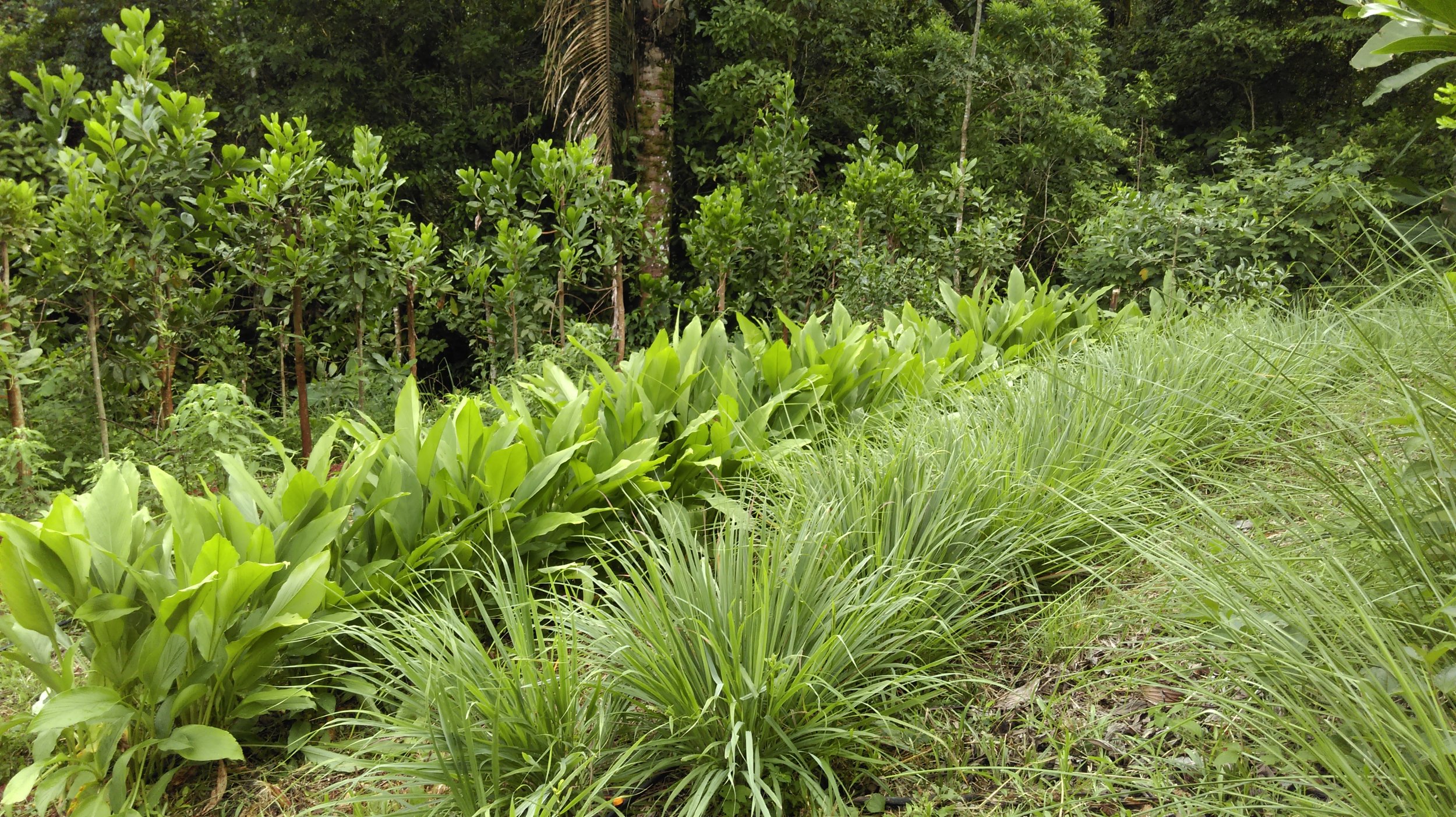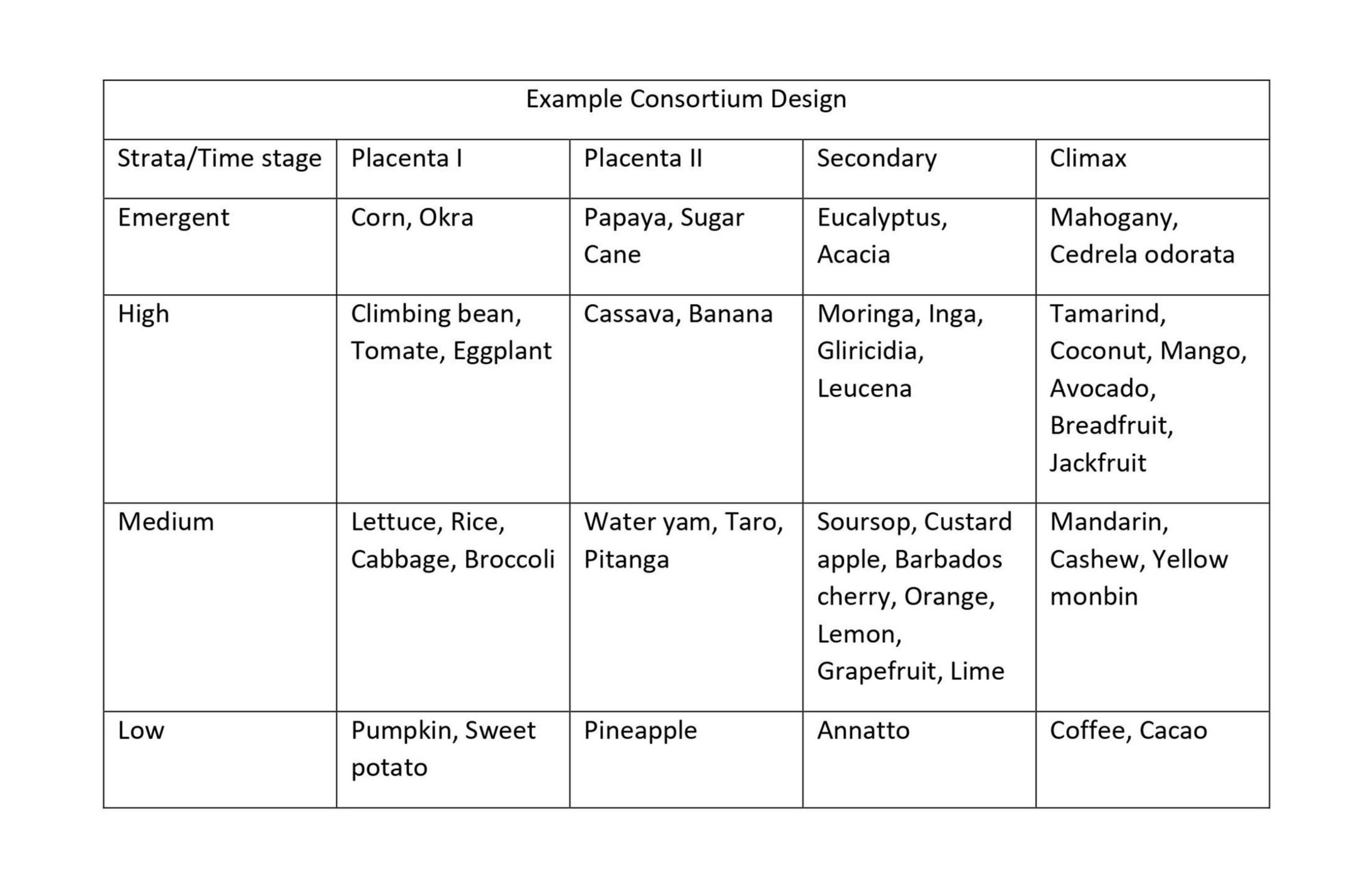How to Optimize Your Syntropic Agroforestry Site
By 2023 apprentice Seb W
Syntropic agroforestry is an agroforestry system developed by Ernst Götsch. Its philosophy lines up contrary to the Darwinian model of evolution, being driven by competition. It is based on seeing evolutionary processes as driven by cooperation among members of the living system in a way that benefits the system as a whole. It aims to maximize of diversity and productivity through aligning Stratification (space) and Succession (time) of its plants. Furthermore, it subdivides these plants into target and biomass species which allows for it to become self-sustainable over time. In its essence it means trying to mimic the real forest as close as possible.
What follows are factors to be integrated into your syntropic agroforestry site to optimize its potential outcome. If syntropic agroforestry is new to you, read What is Syntropic Farming first.
Image by Orchard of Flavours
Consortium of Plants for Syntropic Farming
Since every climate and microclimate offers different qualities, therefore being able to habitat different plants, just putting out a chart of plants won’t help a lot of you. Instead we want to explain at this point how you can write your own consortium. A consortium is basically an optimized garden guild which integrates the succession of its plants over time. Stratification still applies but it is now planned over time. To plan a good consortium you want to research a list of edible plants viable for your microclimate, their height at maturity as well as time until maturity. Based on that you can then categorize your plants into the different strata as well as time stages.
When planning a syntropic site we also want to keep in mind, that it will take at least 20 years until the climax stage is reached (if well managed). Within the first two years (until the end of placenta II) you can still add plants to the system though usually everything is planted in the beginning all at once. The only exception to that rule are climbers (exg. Vanilla or maracuja) as long as there is enough sunlight coming through to the ground.
Types of Plants to Plant
Whatever edible plants you want to grow, in syntropic agroforestry systems edible plants are not the only plants to be grown. Usually one aims to grow around 30% of plants just for biomass, of which again 30% are meant to be nitrogen fixers. Those biomass trees will then be cut down to chest level before the rainy season (or at the end of autumn in temperate climates). Applying this pruning technique will not only build good quality soil over time but also trigger a growth hormone release throughout the whole system pushing growth of everything within it. To attract native bird and insect species you should also consider adding some local plant species even though they might neither add to your table nor fix nitrogen.
Spacing Plants
To get a better understanding of how to finally design such a system, a spacing key is useful:
Tree line to tree line (wideness): 80cm first tree line – 50cm walkway – 70cm biomass plants (e.g.. Vetiver, Mexican sunflower, pigeon pea…) – 200cm filled with veggies – REPEAT
In the lines themselves the trees are planted super dense together.
Depending on size and needs one might combine walkway, biomass plants and/or the veggie area (veggies will only grow until end of placenta II due to shade coverage).
The minimum tree spacing key looks as follows:
Emergent to emergent tree: 12m
Emergent to high tree: 10m
Emergent to medium & low tree: 2m
Emergent to biomass tree: 0.5m
High to high tree: 9m
High to medium tree: 7.5m
High to low tree: 2m
High to biomass tree: 0.5m
Medium to medium tree: 6m
Medium to low tree: 3m
Medium to biomass tree: 0.5m
Low to low tree: 3m
Biomass to biomass tree: 0.5m
Ideally this spacing key is used on contour.
If you, like Ernst Götsch, are not a friend of tree lines, what Ernst recommends doing is: select an appropriate amount of diverse seeds, mix them all together, scatter them over your site and later decide which trees will stay and which won’t (negatives: some edible species vary heavily in flavour and consistency when grown from seed. Positives: way less work, good growing genetics only through natural selection, no row pattern).
Thoughts
Syntropic Agroforestry has received a lot of attention over the past few years. That being said, it is one of many different practices within the field of agroforestry practices and certainly has its negative sides. Contour is often times neglected in favor of north to south rows, invasive grasses instead of the mentioned vegetable rows will be a pain to manage over time, and proper spacing especially regarding tubers needs to be respected.
Hopefully this short how-to helps you get started on planning your own syntropic site to live more self-reliant.
Read These Past Blogs
Applied Permaculture Principles
Learn More
Join us for one of our annual workshops on farming, plants, permaculture and more!






